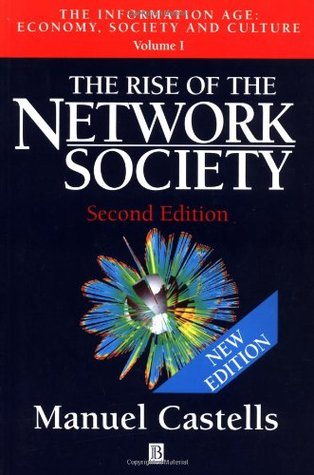It is safe to say that, given the risk factor involved, the pandemic has exacerbated online activities, and even if, as the severity of its effect decreases (when a vaccine has been developed, for instance), people return physically to their places of work, the current expansion of online work practices means it is likely to remain so to a significant degree.
Another “flow” has been added to the “space of flows” – Manuel Castells’ phrase for the dominant spatial mode of the “network society” in his book, The Rise of the Network Society (Wiley-Blackwell, 2010). The new flow is that of the novel coronavirus, which has circulated the globe and appears to be intensifying its grip on societies into which it has “flowed” by way of (mostly) aerial transportation routes. In this respect it resembles its digital counterparts – the kind of virus that can bring your entire operating system crashing down. Perhaps the most striking of such a computer virus, which caused billions of dollars in damage 20 years ago, is the Love-letter-for-you virus.

Hence the parallel between the two kinds of virus – the one a digital creation, part of our “online civilisation”, and the other one belonging to a group of sub-microscopic entities with RNA (ribonucleic acid) as their genetic substance. The parallel does not end there. Just as digital viruses that circulate online can be regarded as messengers carrying lethal information to their intended targets – whether these are bank accounts or private computer files – so, too, the minuscule viral living creature usually fulfils a messenger role insofar as it bears information, or instructions, from DNA (deoxyribonucleic acid) for the control of the process of protein-synthesis.
The novel coronavirus (SARS-CoV-2) is such a RNA virus and, just like the digital viruses on the internet, which make use of all kinds of tricks to get into your computer files, its viral RNA makes use of a stealthy disguise, mimicking the RNA generated by human DNA, to invade the protein-synthesis mechanism of human bodies.
The emergence of the coronavirus, probably – according to most current virology research – at a wet market in Wuhan, China, subsequently rapidly infecting people in the area through contact and proximity, before being carried from there throughout the world on and in the bodies of human hosts on aeroplanes (mostly without their knowledge), marks the decisive convergence of the paths of the two kinds of virus: the digital and the biological. This may seem counterintuitive if one recalls that viruses are the most common biological entities on Earth. What makes the present coronavirus different is the fact that the pandemic that it has brought about could not possibly have occurred so quickly if the virus, as RNA-messenger inhabiting the respiratory systems of our bodies, had not speedily been disseminated globally by means of an encompassing, intricate network of airline connections. This airline-route network comprises part of Castells’ network society, or the online civilisation, more specifically its space of flows. Every time you enter an airport building, or book a flight on the internet, you are in the space of flows, of which the coronavirus has of late become an inescapable part. In the process the virus has had a remarkable effect on the mode of life that is characteristic of the network society.
It has intensified online activities because of the obvious risk of physical proximity – schools, universities and businesses have retreated to the safe haven of internet-interactivity in various guises, including through Skype, Zoom, e-mail, WhatsApp calls and so on, and indications are that in many cases productivity has increased. Hence it is safe to say that, given the risk factor involved, the pandemic has exacerbated online activities, and even if, as the severity of its effect decreases (when a vaccine has been developed, for instance), people return physically to their places of work, the current expansion of online work practices means it is likely to remain so to a significant degree.
For the same reason, travel has been fundamentally reconfigured – particularly by boat (think of the crippling of luxury cruises by the coronavirus) and by air. Some airlines have already gone bankrupt, while others depend on government bailout funds to survive, but whatever the case may be, air travel will probably never be the same as before. The side-effect of the pandemic’s effect on travel has been the accumulation of oil and petroleum in storage tanks and in oil tankers around the globe, and the concomitant crash of the oil price. Everywhere one reads that the oil industry will probably never recover to the levels it enjoyed until the eruption of the coronavirus crisis, which translates into an even greater concentration of human activity in virtual spaces in future. Overseas conference attendance, for instance, will probably make way, to some extent at least, for a higher level of online participation, through Skype or Zoom, than has been the case.
Social class stratification is also likely to be affected even more than it has been since the advent of the network society, which has seen the emergence of what Castells terms its “social elites”, or the “managerial class”. In Chapter 6 of The Rise of the Network Society Castells elaborates on the global “spatial logic” peculiar to this dominant interest group. While partly structural, because it’s asymmetrically distributed according to the interests of the dominant social structure, this spatial logic also surpasses the structural level, because it is conceived and implemented by the elites. Hence, they create a culturally distinctive lifestyle aimed at standardising and unifying the symbolic spatial surroundings of elites globally, as seen in international hotels (like The Westin in Cape Town) with similar room-design and decoration. Moreover, they establish “their own society”, such as exclusively priced real estate and secluded communities, and they participate in spatially exclusive, networked decision-making interactions such as those in airport lounges, on the golf course or in exclusive restaurants.

So how are these global elites’ lifestyle likely to be affected by the pandemic – considering that the latter is a wake-up call regarding the likelihood of future pandemics on a similar scale? One gets a good impression of what the future holds in this respect from Michel Houellebecq’s science-fiction novel, The Possibility of an Island (Vintage, 2007), set in a post-apocalyptic world where the cloned descendants (or neohumans) of wealthy capitalists have ensconced themselves in virtually unassailable compounds where they live lives of unperturbed bliss. By contrast, the few humans who survived the climate catastrophes brought on by the short-sightedness of industrial capitalism have degenerated into barbarism, and whenever they attempt to enter the neohumans’ compounds, the latter dispose of these unfortunate creatures with the same indifference as one would “swat a fly”.
To get to the point of illuminating comparison: the science-fictional neohumans are the outcome of genetic modification and cloning by their human predecessors, which was undertaken so that they would survive the climate-holocaust – they are capable of living ecologically sustainable lives in their altered condition, and have been designed to lack the desire to subjugate others violently or obliterate the natural environment for the sake of some misguided need to increase their financial wealth.
Switching to the real-life present, with its characteristic social stratification: in the face of the probability that this is not the last pandemic virus, what is there to prevent the global elites to do something resembling the actions of Houellebecq’s fictional elites who produced their own genetically altered offspring to escape the catastrophic fruits of their own shortsightedness? But even if the global elites don’t go quite that far, and extrapolating on the basis of Castells’s analysis of their present position in the network society, it is likely that they will expand the spatial logic of separating themselves from the rest of us in a perverse gesture of elite-apartheid, by withdrawing to secluded, virtually inaccessible spaces such as privately-owned islands or mountain retreats, where the remainder of humanity, the virus-carrying plebs, will not be allowed to set foot. If you think they would find this unconscionable because they care too much about people, think again.